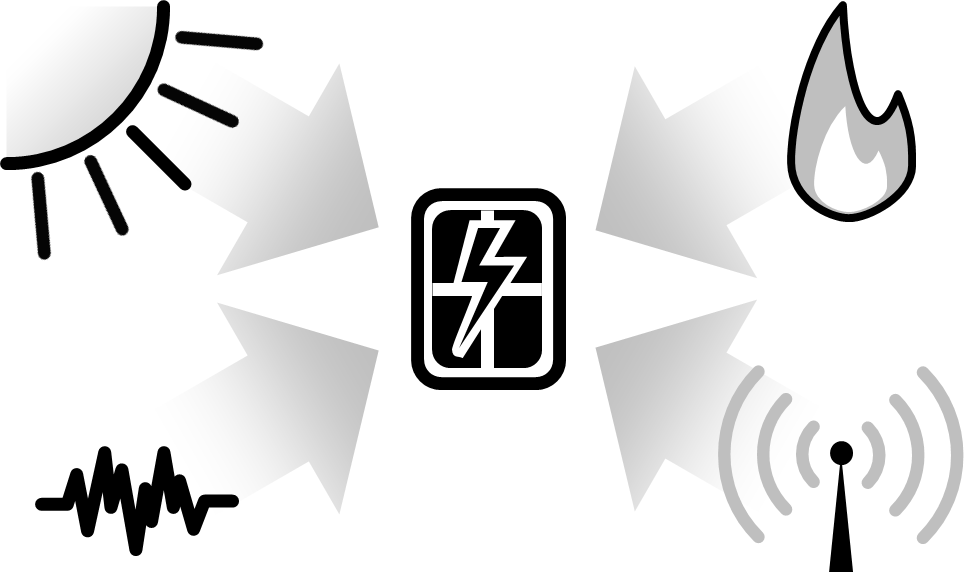Energy Harvesting Device
![]()
Devices that are mobile or located in remote places cannot rely on fixed infrastructure. When they require a small amount of power and the environment allows it, use energy harvesting to gather its required power.
Aliases:
Ambient Energy, Event Energy-Limited, Event-Based Harvesting
Context:
You have a device that needs to be powered. The device needs only a small amount of energy to function. Besides, your use case dictates a specific location for this device which restricts available energy sources. For example, the device has to be mobile, wearable, or in a remote location.
Problem:
You need to power a device with very little power needs. The device is mobile or located in a remote place. Its environment is stable and predictable.
Forces:
-
Location: The device has to be mobile or is located at a remote place. Thus, it cannot be a Mains-Powered Device.
-
Effort: Replacing or recharging a battery in frequent intervals is too much effort or not possible at all. Thus, using a Period Energy-Limited Device is not an option.
-
Energy Requirements: The device needs very little energy to function.
-
Lifetime Energy Requirements: The device needs more energy over its lifetime than current batteries can provide in a reasonable form factor without being replaced or recharged. Thus, using a Lifetime Energy-Limited Device is not an option.
Solution:
Integrate an energy harvesting component, such as a solar cell, into the device. Use it to turn the energy available in the device’s surroundings into power for the device. Use components and technologies optimized for low-power usage to make the most of the harvested energy.

Solution Details:
Benefits:
Variants:
Related Patterns:
Known Uses:
- L. Reinfurt, U. Breitenbücher, M. Falkenthal, F. Leymann, and A. Riegg, “Internet of Things Patterns for Devices,” in Proceedings of the Ninth International Conferences on Pervasive Patterns and Applications (PATTERNS) 2017, 2017, pp. 117–126. Available at https://www.thinkmind.org/index.php?view=article&articleid=patterns_2017_9_10_70019